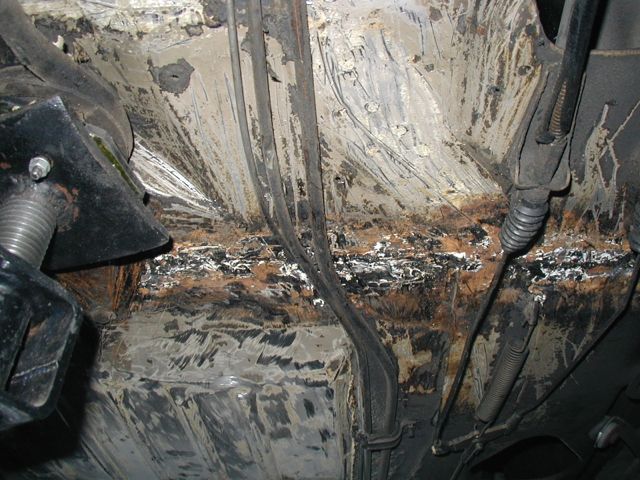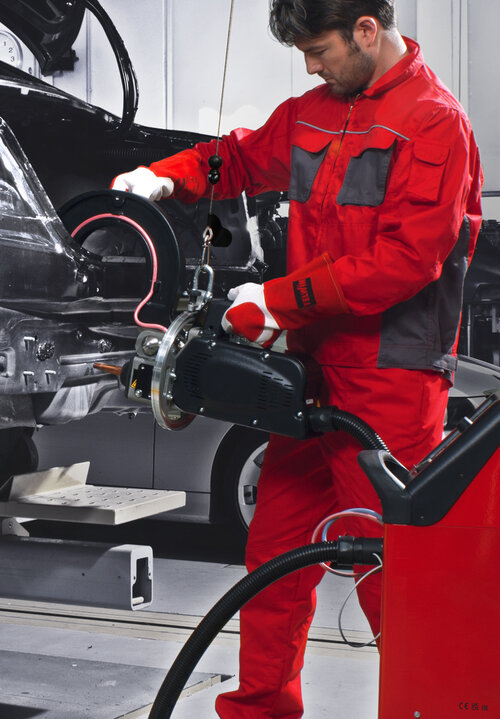Everything about Welding: Secret Insights Into Techniques and Finest Practices for Success
Welding includes a range of strategies, each suited for certain products and applications. Recognizing these methods, such as GMAW, SMAW, and TIG, is important for attaining ideal results. The appropriate devices and safety practices can not be overlooked. As preparation and repairing play important duties in the welding procedure, understanding these elements can considerably boost the high quality of the end product. What are the vital elements that guarantee a successful weld?
Understanding Various Welding Methods
Welding techniques include a range of techniques, each fit to specific applications and materials. Among the most usual methods are Gas Metal Arc Welding (GMAW), Shielded Steel Arc Welding (SMAW), and Tungsten Inert Gas Welding (TIG) GMAW, additionally referred to as MIG welding, is prominent for its rate and convenience, making it suitable for slim products. SMAW, or stick welding, is preferred for its simpleness and efficiency in outside settings, particularly with thicker metals. TIG welding uses precision and control, making it appropriate for complex job and non-ferrous metals (Welding). Each strategy has its unique benefits and considerations, permitting welders to pick the finest technique based on the job's needs, product type, and desired outcomes. Comprehending these methods is crucial for successful welding
Crucial Welding Tools and Tools
While numerous welding methods need particular skills, the appropriate equipment and devices are equally important for accomplishing quality outcomes. Essential welding devices includes welding makers, which vary depending on the strategy-- such as MIG, TIG, or stick welding. Protective equipment, including aprons, safety helmets, and handwear covers, guarantees security and convenience during the procedure. On top of that, clamps and components help secure products in position, guaranteeing accuracy in welds. Consumables like welding poles, cord, and securing gas are also critical components that affect the quality of the weld. Devices such as mills and cutters help with surface prep work and post-weld completing, adding to an expert outcome. Purchasing premium tools eventually improves the efficiency and effectiveness of welding tasks.
Safety And Security Practices in Welding
Correct safety and security methods are important in the welding market to shield employees from potential hazards. Welders have to use suitable personal protective equipment (PPE), consisting of helmets with appropriate shading, gloves, and flame-resistant apparel. Appropriate air flow is vital to lower direct exposure to dangerous fumes and gases produced throughout the welding procedure. In addition, workers must be trained in the appropriate handling of welding equipment to avoid mishaps. Fire safety procedures, such as keeping combustible products away from the welding area and having fire extinguishers conveniently offered, are needed. Routine evaluations of equipment and work spaces can aid recognize potential threats before they bring about crashes. By adhering to these safety and security methods, welders can produce a much safer working setting and reduce risks related to their profession.
Readying Products for Welding
Preparing materials for welding is an essential action that greatly influences the quality and stability of the end product (Montana Mobile Welding and Repair Fabrication). Appropriate preparation includes cleaning the surface areas to get rid of impurities such as oil, dirt, and rust, which can jeopardize the weld. Strategies such as grinding, fining sand, or utilizing solvents are generally used to attain a tidy surface area. In addition, ensuring that the materials mesh snugly is crucial; gaps can result in weak welds. It's additionally important to consider the positioning and positioning of the elements, as this will certainly influence the ease of welding and the final result. Selecting the proper filler product and making certain compatibility with the base steels is vital for accomplishing strong, durable welds.
Tips for Achieving High-Quality Welds
Accomplishing premium welds needs attention to detail and adherence to finest methods throughout the welding process. Proper joint prep work is necessary, guaranteeing surface areas are clean and totally free from pollutants. Selecting the appropriate filler material and welding strategy based on the base steels is essential for suitable bonding. Maintaining consistent traveling rate and angle while welding can advertise and stop flaws uniformity. Additionally, read this article managing warm input is necessary; excessive warm can lead to warping and deteriorated joints. Consistently examining the welds throughout the procedure allows for immediate modifications if essential. Lastly, utilizing proper post-weld therapies, such as cleansing and anxiety relief, can boost the durability and honesty of the weld, ultimately making certain a successful end result.
Repairing Usual Welding Issues
Welding typically offers difficulties that can influence the high quality and honesty of the last item. Typical concerns such as porosity, irregular weld grains, and overheating can arise, each requiring certain fixing strategies. Comprehending these problems is necessary for welders to boost their skills and accomplish excellent outcomes.
Porosity Problems Explained
Although porosity can usually be ignored, it stays a crucial issue in welding that can endanger the honesty of a completed item. Porosity refers to the presence of little gas pockets within the weld grain, which can lead and deteriorate the joint to premature failure. This issue normally occurs from pollutants, wetness, or incorrect securing gas protection throughout the welding process. To alleviate porosity, welders need to validate that the base products are completely dry and clean, make use of suitable shielding gases, and preserve consistent welding specifications. Consistently examining the tools and setting can additionally help identify potential problems prior to they manifest in the weld. Attending to porosity efficiently is essential for accomplishing strong, durable welds that fulfill quality criteria.

Irregular Weld Beads
Inconsistent weld beads can significantly affect the top quality and toughness of a finished product. Various aspects contribute to this problem, consisting of inappropriate travel rate, inaccurate amperage settings, and inconsistent electrode angles. When the welder relocates too rapidly, a grain might show up slim and do not have infiltration, while moving as well slowly can create too much build-up. Furthermore, utilizing the incorrect amperage can cause either undercutting or excessive spatter, both of which concession weld integrity. The welder's method, such as irregular lantern motion, can likewise cause irregular bead appearance. To minimize these troubles, welders need to concentrate on keeping steady, regulated movements and ensuring appropriate equipment settings to accomplish uniformity in their welds. Consistency is vital to attaining solid and trustworthy welds.
Getting Too Hot and Warping Issues
Extreme heat throughout the welding process can lead to considerable getting too hot and contorting issues, affecting the structural integrity of the workpiece. These troubles commonly show up as distortion, which can jeopardize positioning and fit-up, making more assembly testing. Factors contributing to overheating include the option of welding specifications, such as voltage and take a trip speed, as well welding gases as the kind of product being bonded. To minimize these issues, welders should maintain consistent traveling rate and appropriate heat input while checking the workpiece temperature level. Additionally, preheating or post-weld heat treatment can aid reduce anxieties created by rapid cooling - Welding. Regular evaluation and adherence to best methods are essential in preventing getting too hot and ensuring the long life and dependability of welded structures
Frequently Asked Concerns
What Are the Career Opportunities in the Welding Industry?
The welding sector provides diverse occupation opportunities, including settings as welders, teachers, inspectors, and designers. Professionals can operate in manufacturing, building and construction, my link aerospace, and auto fields, gaining from strong demand and competitive incomes in various duties.
Exactly How Can I Enhance My Welding Rate Without Compromising High Quality?
To enhance welding speed without giving up high quality, one ought to exercise reliable methods, maintain equipment, enhance settings, and boost hand-eye sychronisation. Routine training and seeking responses can additionally significantly add to accomplishing quicker, top notch welds.
What Certifications Are Offered for Welders?
Numerous certifications exist for welders, including those from the American Welding Society (AWS), the National Center for Building Education And Learning and Study (NCCER), and different industry-specific companies. These credentials improve employability and demonstrate skill proficiency.
Just How Does Welding Impact the Characteristics of Metals?
Welding affects the buildings of metals by modifying their microstructure, which can lead to modifications in solidity, strength, and ductility. Heat input and air conditioning prices during the procedure greatly affect these material features.
Can I Weld Dissimilar Metals With Each Other?
